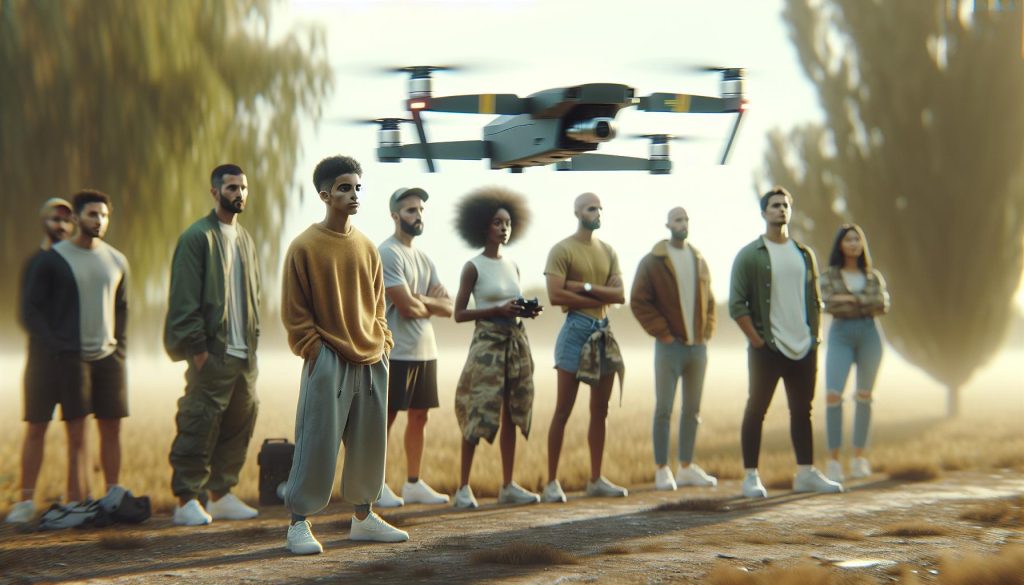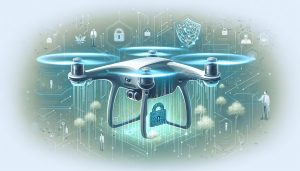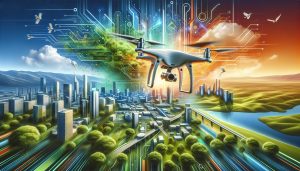Did you know that the DJI FPV drone is capable of reaching astonishing speeds that can redefine your aerial photography and racing experiences? Understanding how fast this drone can go not only highlights its impressive engineering but also influences your flying strategies and safety measures. Whether you’re a racing enthusiast eager to push limits or a filmmaker looking to capture breathtaking shots from the sky, knowing the speed capabilities of the DJI FPV is essential. Join us as we delve into the speed records of this remarkable drone, exploring its performance in various conditions and settings while providing you with insights to optimize your flying experience. Your journey into the exhilarating world of drone speed begins here!
How Fast Can the DJI FPV Drone Fly?
The DJI FPV drone is designed for speed enthusiasts, boasting impressive specifications that make it one of the fastest drones on the market. The FPV drone can reach maximum speeds of up to 140 km/h (approximately 87 mph) in its Manual Mode. This remarkable speed is not merely a figure on paper; it integrates advanced technology, including powerful motors and optimized aerodynamics, to provide an exhilarating flying experience that thrills both novice and experienced drone pilots alike.
When in Normal Mode, the speed is capped at 10 km/h, which allows beginners to familiarize themselves with the controls and flying dynamics without feeling overwhelmed. However, as pilots build confidence, they can smoothly transition to Sport Mode, where the speed can reach 97 km/h (about 60 mph), striking a balance between high-speed thrills and safety. Understanding how to utilize these modes effectively is essential for maximizing performance and enjoyment during flight.
To achieve top speeds, piloting techniques also play a crucial role. Experienced pilots recommend flying in open spaces free from obstacles and avoiding windy conditions, which can hamper speed and stability. Additionally, effective use of the drone’s throttle control allows for more manageable acceleration while flying at high speeds. This combination of the drone’s capabilities and the pilot’s skills creates opportunities for exhilarating flight experiences, deepening the understanding of how fast the DJI FPV can truly go.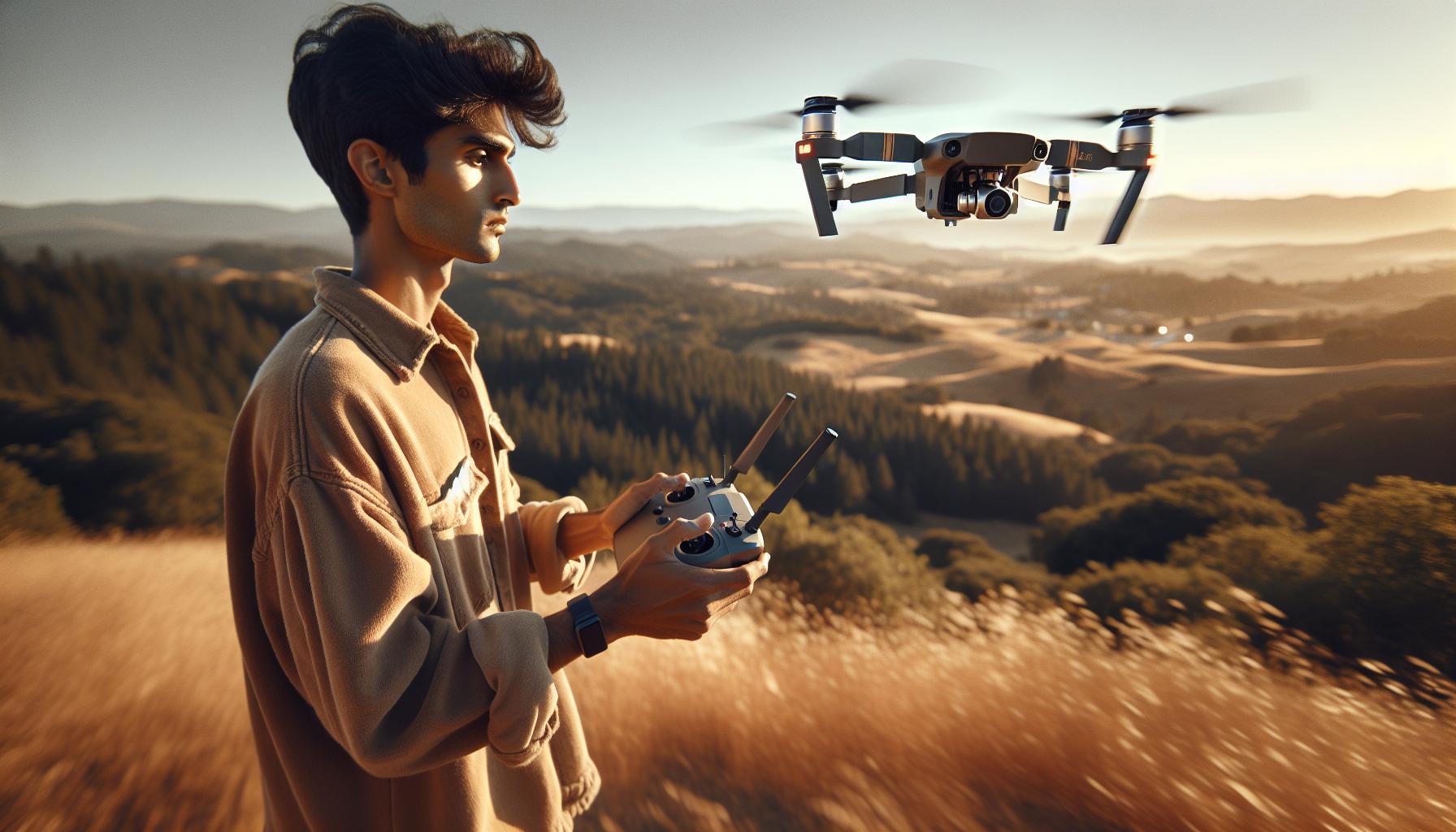
Understanding the Speed Specifications of the DJI FPV
The DJI FPV drone stands out as a remarkable machine, engineered for those who crave speed and agility in the skies. Capable of reaching an impressive maximum speed of 140 km/h (approximately 87 mph) in Manual Mode, this drone is designed to deliver the adrenaline rush that many drone enthusiasts seek. This speed not only reflects cutting-edge engineering but also incorporates advanced features such as powerful motors and sophisticated aerodynamics. When piloted skillfully, the FPV creates exhilarating experiences, revealing just how fast a drone can traverse the open sky.
Understanding the different flight modes available on the DJI FPV significantly impacts how speed is experienced. In Normal Mode, the drone caps its speed at a manageable 10 km/h, which is ideal for beginners who need time to adjust to the controls without feeling overwhelmed. On the other hand, Sport Mode, which allows speeds up to 97 km/h (about 60 mph), provides a thrilling experience while still promoting a degree of safety for those who are building their piloting skills. These modes allow pilots to gauge their abilities and gradually develop confidence as they transition to higher speeds.
The impressive speed of the DJI FPV relies not solely on its mechanical capabilities but also on the piloting techniques employed. To harness these speeds effectively, experienced pilots recommend flying in environments that are open and free from significant obstacles, as this ensures stability and safety during high-speed maneuvers. Windy conditions can adversely affect performance; thus, choosing the right weather conditions is crucial. Ultimately, the combination of the drone’s advanced design and the pilot’s growing expertise empowers users to unlock the thrill of flying at high speeds, making each flight an experience rich in excitement and discovery.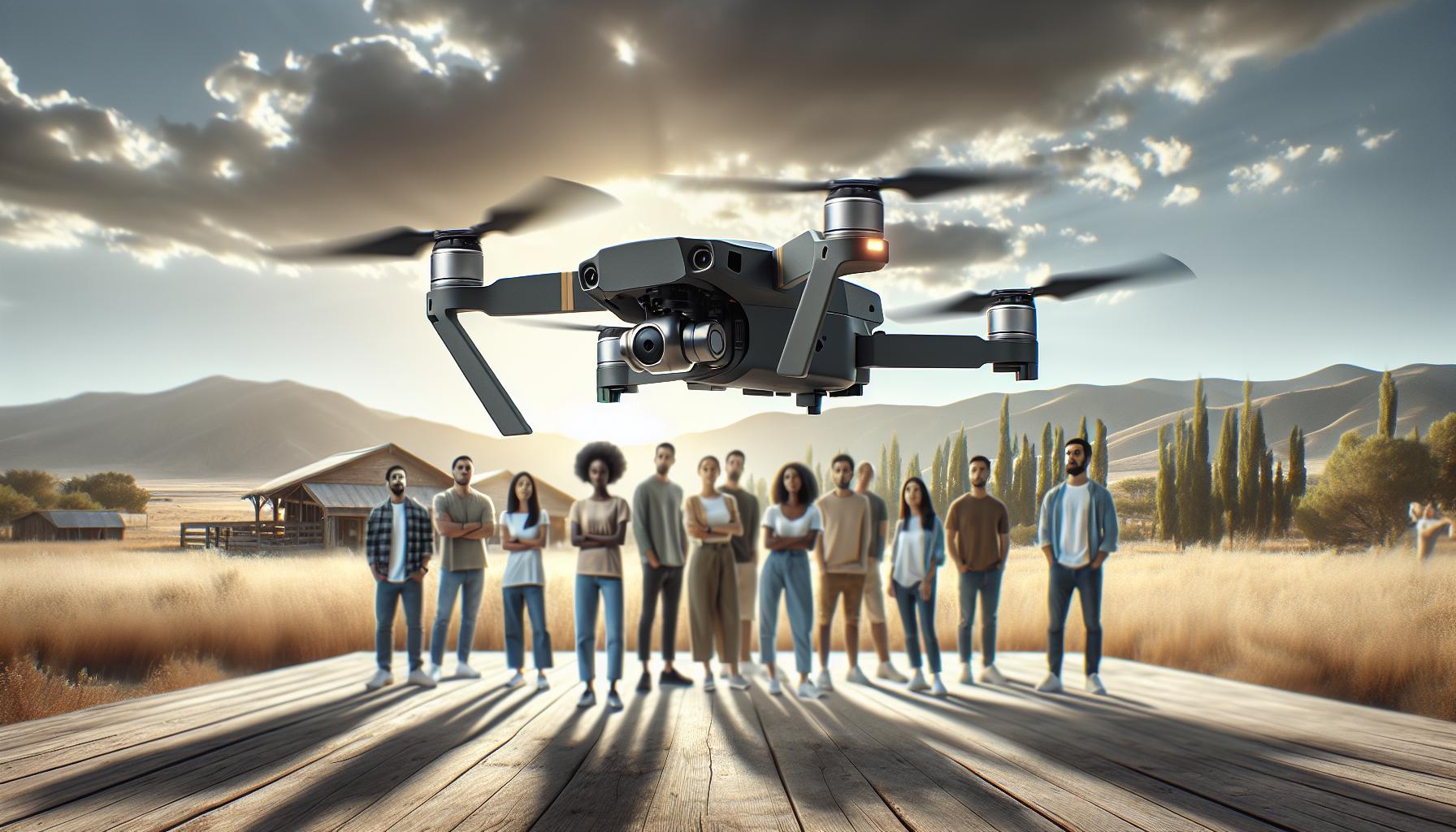
Comparing DJI FPV Drone Speed with Other Models
The DJI FPV drone’s impressive maximum speed of 140 km/h (approximately 87 mph) sets a benchmark in the realm of high-speed aerial photography and racing drones. However, when comparing it to other models, the landscape shifts, revealing a spectrum of speed capabilities across various brands and specifications. For enthusiasts gearing up for a race or considering their next purchase, understanding how the DJI FPV stacks up can make all the difference.
Speed Comparisons with Other Popular Drones
When comparing the speed of the DJI FPV to other popular models, several key competitors emerge. The Racing Drones category boasts some extremely fast options; for example, the Rekon 5 can achieve speeds of up to 160 km/h (about 99 mph). However, these racing drones often lack the cinematic capabilities that many pilots seek for video production. In contrast, the Mavic Air 2 offers a slower speed of around 68 km/h (about 42 mph), yet it excels in stability and photographic quality, making it more suitable for casual users prioritizing aerial photography over speed.
Furthermore, the DJI Mavic 3 emphasizes efficiency and has a top speed of 68 km/h as well, demonstrating that flight performance is about more than just sheer speed-it also includes factors like battery life and camera quality. For those focused solely on speed, specialized racing drones are often the way to go. However, they may require more piloting skill and experience, while the DJI FPV provides an intuitive bridge between racing and recreational flying.
Real-World Speed Experiences
User experiences highlight the significance of context when discussing drone speed. While the FPV drone showcases its capabilities in open spaces, users have noted difficulty maintaining high speeds in urban settings due to restrictions and obstacles. Pilots often share experiences on forums, noting that with the right environment, the DJI FPV can deliver thrilling speeds while enjoying the benefits of advanced features like low-latency video transmission.
In conclusion, while the DJI FPV holds its ground with impressive speed, several models offer enticing alternatives that cater to specific needs. Racing enthusiasts might chase the fastest models, while aerial photographers may lean toward drones that balance speed with quality. Understanding each model’s strengths allows flyers to make informed choices, ensuring they find the best fit for their flying style and objectives.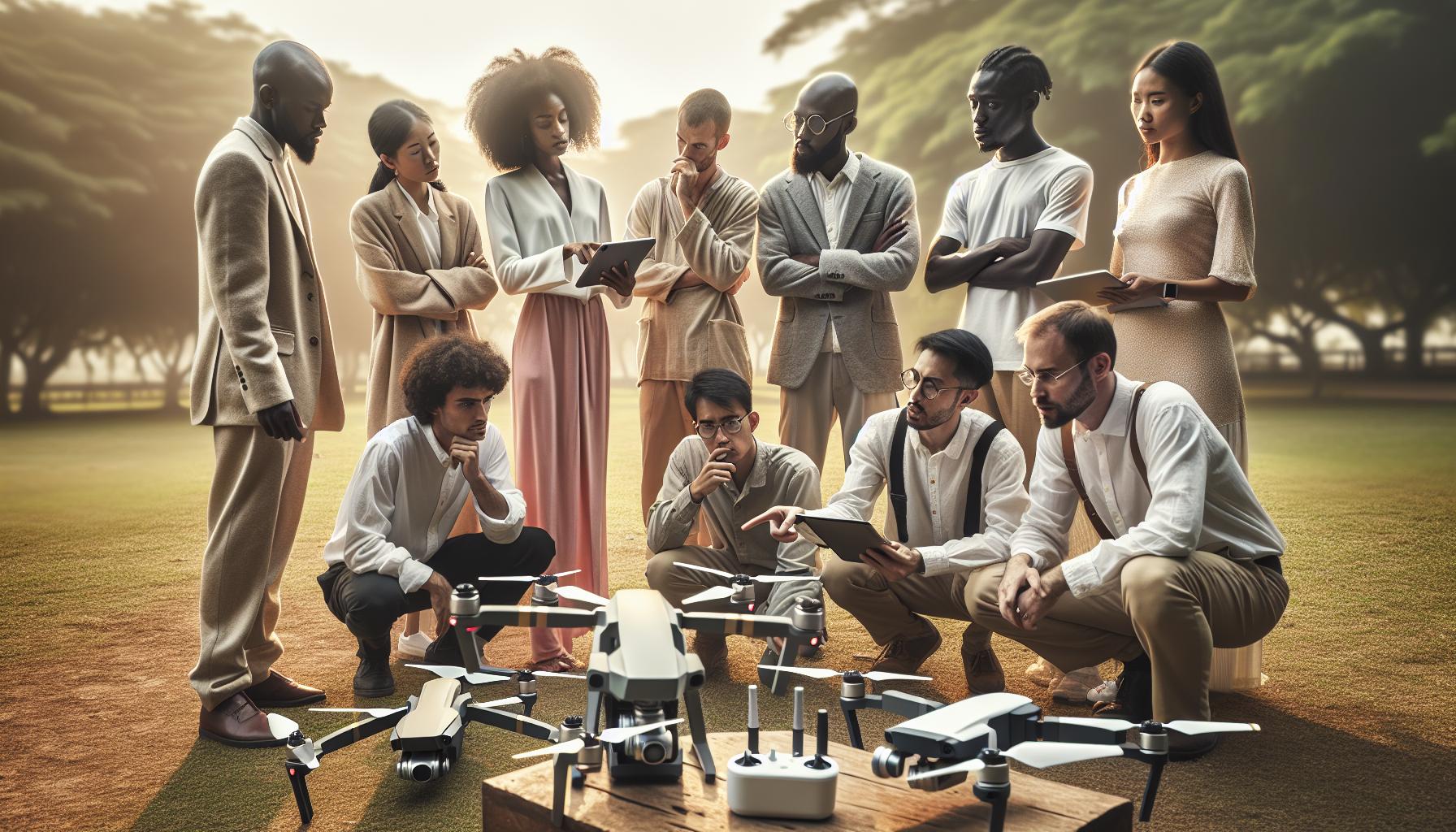
Real-World Speed Tests: What Do the Numbers Say?
The DJI FPV drone is not just a speed demon in theory; real-world tests have shown that it can live up to its maximum speed specification of 140 km/h (approximately 87 mph) under optimal conditions. However, the performance can vary significantly based on several factors such as environmental conditions, pilot skill, and specific flight settings. Real-world speed tests have highlighted how the drone behaves in different environments: wide open spaces allow it to reach its maximum capabilities, while urban areas often hinder full-throttle performance due to obstacles, regulations, and airspace restrictions.
Feedback from the pilot community reveals that many have pushed the limits of their DJI FPV across various terrains. For instance, in rural settings where wide expanses are available, pilots can achieve impressive speeds and even record their best times, with some reporting maximum speeds that hold true to the manufacturer’s claims. Settings like race tracks or drone racing events have also shown the FPV in a competitive light, where agility and responsiveness contribute to achieving noteworthy speed records.
Moreover, users have utilized precise GPS applications to log their speed tests, providing robust data reinforcing the DJI FPV’s capabilities. Some pilots document their experiences online, showcasing not only speed achievements but also how tweaking settings like the drone’s flight mode-particularly the “manual mode”-can enhance performance and acceleration. This demonstrates that while the specifications are impressive, the true measure of speed often comes from understanding the intricacies of the drone’s operation.
In short, the DJI FPV drone offers exciting speed potential, but realizing that speed requires consideration of the flying environment, correct settings, and piloting experience. Enthusiasts and professionals alike can benefit from sharing insights and techniques that help maximize this powerful drone’s performance, ultimately allowing for breathtaking flight experiences.
Speed Mods and Upgrades for Enhanced Performance
Enhancing the speed and performance of your DJI FPV drone can be a thrilling endeavor, particularly for those who crave the rush of high-speed flying. To unlock the full potential of your device, consider a series of modifications and upgrades that can elevate your experience. These enhancements will not only improve your top speed but can also optimize your control and handling, making for a more enjoyable flight.
One of the most impactful upgrades involves the use of high-performance propellers. Switching to lightweight carbon fiber or specially designed racing propellers can reduce drag and improve thrust, allowing for a swift acceleration that complements the drone’s impressive specifications. Users often report noticeable increases in both speed and maneuverability after making this change. Make sure to select propellers that are compatible with your specific model to maintain balance and stability during flight.
Additionally, upgrading the firmware of your DJI FPV is essential for optimal performance. Regular firmware updates from DJI often include improvements to flight algorithms and enhancements that can increase the drone’s responsiveness at higher speeds. Keeping your software up-to-date ensures that you are benefiting from the latest advancements, which can significantly impact how your drone handles at peak velocities.
Another critical aspect to consider is the battery upgrade. Opting for a high-capacity battery not only extends your flight time but also enhances power output, which is crucial when pushing your drone to its limits. Look for batteries with a higher discharge rate, as they can deliver more power quickly, supporting rapid acceleration and sustained high-speed flights. Just ensure that the weight of the battery does not exceed the drone’s maximum load capacity, as this could affect its performance adversely.
Finally, don’t overlook the importance of fine-tuning your drone’s flight modes. Exploring settings like the “Sport Mode” or even customizing the “Manual Mode” can enable you to experience your drone’s speed more effectively. By adjusting parameters for pitch and yaw, you can achieve sharper turns and faster response times, making it easier to navigate high-speed maneuvers safely and enjoyably.
Leveraging these modifications can help you achieve incredibly thrilling speeds with your DJI FPV drone while ensuring safety and control remain priorities. Whether you are racing against peers or capturing breathtaking aerial footage, these enhancements can make your flying experience more exhilarating than ever.
Factors Affecting Speed: Conditions You Should Know
When it comes to flying the DJI FPV drone, several environmental and operational factors can significantly influence its speed capabilities. Understanding these conditions can help pilots optimize their performance and push their drone to its limits safely and effectively.
Weather conditions play a critical role in determining how fast a drone can fly. Particularly, wind speed and direction can greatly impact flight stability and speed. A headwind can create drag, slowing down the drone considerably, while a tailwind can enhance its speed significantly. Pilots should always check weather forecasts before flying and avoid days with strong winds or gusts that could jeopardize control and safety.
Temperature also affects drone performance. Extreme heat can lead to battery overheating, reducing both flight time and speed. Similarly, cold temperatures can affect battery efficiency and power output, leading to reduced speed and operational range. Optimal battery health is crucial; therefore, pilots should strive to fly in moderate temperatures and ensure their batteries are correctly calibrated and maintained.
Furthermore, the weight of the drone is a decisive factor affecting its acceleration and top speed. By minimizing unnecessary extra weight-such as carrying heavy accessories or equipment-pilots can enhance flight performance. Upgrading to lighter materials, such as carbon fiber propellers, can significantly reduce drag and improve thrust, allowing the drone to achieve higher speeds.
Lastly, the altitude at which the drone is flown can influence its performance as well. As elevation increases, the air becomes less dense, which can result in reduced lift and lower speeds in some cases. Pilots flying in mountainous regions should be aware of these changes and potentially adjust their expected speed and operational strategies accordingly.
By considering these factors-weather conditions, temperature, weight management, and altitude-pilots can maximize the speed and performance of their DJI FPV drone effectively, tailoring their flights to achieve optimal results.
Performance Tips: Maximizing Your DJI FPV Speed
Flying at high speeds requires not only a capable drone like the DJI FPV but also skillful operation and strategic planning. To unlock the full speed potential of your drone, understanding how to optimize performance is key. One essential tip is to ensure that your drone’s firmware is always up to date. Regular updates can enhance the flight characteristics and overall performance, providing improvements that could impact speed.
Another important aspect involves weight management. Every gram counts when flying, so minimizing unnecessary weight can inherently boost speed. Consider removing or avoiding heavy accessories and opting for streamlined setups. Additionally, using lighter propellers, such as carbon fiber options, can greatly reduce drag and allow for faster acceleration.
It’s also advisable to practice in different flight modes. The DJI FPV offers various settings like “N Mode” for normal flying and “S Mode” for more aggressive maneuvering. Find the right mode that enhances your control while maximizing speed. Pilots should also monitor their battery health – higher voltage and better charge can lead to sustained power output, directly affecting speed capabilities. Before flying, ensure that your batteries are fully charged and calibrated correctly to maintain optimal performance throughout your flight.
Finally, simulating high-speed flights can also train your piloting skills. Utilizing a drone simulator can help you master the nuances of flying at speed without risk. By combining these strategies, from maintaining your equipment to skillful piloting and weight management, you can significantly enhance your DJI FPV’s speed and performance in the air, ensuring an exhilarating and efficient flight experience.
Exploring Speed Flight Modes in DJI Drones
The ability to switch between various flight modes is a key feature that enhances the performance of DJI drones, especially the FPV model. Understanding how to utilize these speed flight modes can greatly affect not only how fast you can fly but also how well you can control the drone during those high-speed maneuvers. The DJI FPV gives pilots access to multiple flight modes, each designed to cater to different flying styles and skill levels, effectively unlocking the drone’s full potential.
Key Flight Modes
The DJI FPV primarily offers three modes: N Mode (Normal), S Mode (Sport), and M Mode (Manual). Each mode has its own unique characteristics that influence speed and maneuverability.
- N Mode: This mode is user-friendly and is ideal for beginners. It limits the drone’s speed and allows for stabilization features to assist in flying. While it’s designed to provide a gentle flight experience, it restricts maximum speed, making it suitable for learning and practicing basic piloting skills.
- S Mode: In Sport mode, the drone operates with enhanced speeds and quick response times. This is where the FPV truly comes alive, allowing experienced pilots to push their speed limits while maintaining some level of stabilization. Pilots can execute rapid turns and advanced maneuvers, making it perfect for those who want to experience the thrill of flying.
- M Mode: Manual mode is for the advanced flyer who wants full control over the drone’s performance. In this mode, the FPV stops providing stabilization, allowing for the highest speeds possible. However, it requires significant skill and practice, as pilots must manage difficult maneuvers themselves without electronic assistance.
Practical Tips for Each Mode
When transitioning between these modes, knowing when to utilize each is crucial for achieving peak performance and safety. In challenging conditions, such as high winds or tight spaces, N Mode can help maintain control. Conversely, S Mode is great for open areas where pilots can safely test their speed and agility. M Mode should be reserved for seasoned pilots or controlled environments, as the risk of loss increases significantly without stabilization.
Maximizing speed in any of these modes requires careful attention to weight management, pre-flight checks, and battery performance. Keeping the drone lightweight by minimizing accessories and ensuring that your batteries are in top condition will enhance your experience across all flight modes. Regular practice in each mode will not only improve piloting skills but also build confidence, ultimately allowing you to push the boundaries of what your DJI FPV can achieve.
Common Myths About Drone Speed Debunked
When it comes to drone speed, myths often cloud the truth, leaving many pilots misinformed about what their machines can really achieve. One of the most prevalent misconceptions is that all drones are overwhelmingly fast or can go as fast as the advertised figures without considering conditions and setup. For instance, while the DJI FPV drone can reach speeds up to 140 km/h (approximately 87 mph), they won’t always attain that speed in real-world scenarios. Factors such as wind resistance, battery health, and even weight distribution can significantly affect performance, highlighting the need for careful pre-flight planning.
Another common myth suggests that higher speeds equate to lower control. While speed can pose challenges, it’s essential to understand that the FPV’s various flight modes cater to skill levels and flying styles. For example, S Mode enhances speed while still offering some level of stabilization, making it ideal for those ready to push their limits. In contrast, M Mode, while capable of achieving the highest speeds, demands extensive piloting experience and quick reflexes to manage the lack of stabilization, showing that speed isn’t just about raw power-it’s also about skill.
Furthermore, there’s a belief that speed comes at the expense of battery life. While high-speed flying can drain batteries faster, efficient flying techniques can help mitigate this. By planning flights to include periods of lower speed or gentle maneuvers wherever possible, pilots can extend their operational time. Proper battery care, such as maintaining optimal charge levels and regularly monitoring battery health, is just as crucial to maximizing speed as it is to overall performance.
Lastly, many pilots assume that achieving speed records is solely dependent on the drone’s specifications. However, location and environmental factors play a critical role. Flying in open areas free of obstacles or interference generally allows for faster speeds compared to crowded environments. Hence, knowing the right conditions can provide valuable opportunities to test the limits of speed without compromising safety or control. By debunking these myths, drone enthusiasts are empowered to make informed decisions that enhance both their flying experience and performance.
Safety Considerations When Flying at High Speeds
Flying at high speeds with the DJI FPV drone can be exhilarating, but it also comes with significant responsibilities. Pilots must be keenly aware of their surroundings and maintain control, as speed amplifies any potential hazards. Careful pre-flight checks and situational awareness are crucial when navigating at speeds up to 140 km/h. This is not just about enjoying the thrill; it’s about ensuring safety for both the pilot and those around them.
Before embarking on a fast flight, consider the following safety tips:
- Choose the Right Environment: Select open areas with minimal obstacles to reduce the risk of collisions. Crowded environments can be unpredictable, making high-speed maneuvers dangerous.
- Pre-Flight Planning: Conduct a thorough assessment of the flight area, accounting for wind conditions, weather patterns, and possible interference. Always have a clear exit strategy in case the situation changes rapidly.
- Flight Mode Awareness: Familiarize yourself with the different flight modes available. While S Mode offers some stabilization, M Mode requires advanced skills due to the lack of assistance. Transition gradually between modes as your confidence builds.
- Use Spotters: If flying in a populated area or during group outings, having spotters can enhance safety by providing additional eyes to monitor the drone’s flight path.
- Monitor Battery and Payload: Speed can significantly impact battery life and performance. Ensure your battery is fully charged, and be mindful of any heavy accessories that could affect flight capabilities.
- Follow Local Regulations: Always comply with national and local drone regulations regarding flight speeds and areas, as this can differ widely. Staying within legal boundaries is essential for pilot safety.
Being aware of the psychological aspect is equally important. High-speed flying can provoke adrenaline rushes that may cloud judgment. Stay calm and focused, and practice flying at high speeds in controlled environments before attempting to push limits in more challenging scenarios. Share experiences with fellow pilots in forums or communities, as learning from others can provide valuable insights on managing risks when exploring the speed capabilities of the DJI FPV drone. Taking these precautions will not only enhance your flying experience but also help maintain safe operations for everyone involved.
Legal Regulations for Fast Drone Operations
Navigating the world of drone regulations is crucial for pilots eager to push the speed limits of their DJI FPV drone. While racing and high-speed flying can be exhilarating, understanding the legal landscape ensures that these activities are conducted responsibly and within the constraints of the law. Each country has different regulations regarding flight speed, altitude, no-fly zones, and registration requirements, which can significantly affect how and where you can operate your drone at high velocities.
For instance, in the United States, the Federal Aviation Administration (FAA) mandates that drone operators adhere to a maximum altitude of 400 feet in uncontrolled airspace and requires all commercial drone pilots to maintain a Part 107 Certification. This certification includes knowledge of airspace regulations, which becomes crucial when operating at high speeds. Pilots are also urged to stay clear of manned aircraft and other air traffic, especially during high-speed sessions, where reaction times are critical.
Similarly, in the United Kingdom, the Civil Aviation Authority (CAA) has laid out specific guidelines that prohibit flying drones over populated areas or beyond visual line-of-sight (VLOS). Violating these regulations can not only result in hefty fines but also restrict future flying privileges. To enhance safety and compliance, pilots should utilize tools for checking local airspace statuses and aware of temporary flight restrictions (TFRs) that can arise due to events like airshows or emergencies.
Keeping these regulations in mind, operators should take proactive steps to ensure compliance before embarking on high-speed flights. This may involve a pre-flight brief that includes a check of local regulations, understanding airspace classifications, and potentially obtaining precise permissions when required. Whether you’re particularly keen on breaking speed records or simply looking to have fun, being well-versed in the legal aspects of drone operations ensures a safe and enjoyable flying experience without capturing the unwanted attention of regulatory authorities.
User Experiences: Speed Records from the Community
Users in the DJI FPV community have been sharing some impressive speed records, showcasing the full capabilities of this drone. The DJI FPV is designed to reach speeds up to 87 mph (140 km/h) in Sport Mode, a feature that has thrilled hobbyists and racers alike. Many pilots have documented their experiences pushing these limits, often reporting speeds that not only meet but sometimes exceed official specifications, thanks to skillful piloting and optimal conditions.
One standout account involves a pilot reaching an astonishing 94 mph (151 km/h) during a well-planned race against the clock. The user emphasized that achieving such speeds depended heavily on environmental factors, including low wind resistance and clear, unobstructed airspace. Maintaining a consistent flight path and minimizing altitude changes were also critical to maximizing speed. This pilot’s experience is a testament to how careful planning and understanding of drone dynamics can yield remarkable results.
Insights and Tips from the Community
Users have also exchanged valuable performance tips to help others capture their own speed records. Some shared their secrets, like:
- Battery Management: Ensuring batteries are fully charged and in optimal condition can significantly affect performance. Users recommended conducting regular checks for swelling or damage.
- Weight Reduction: Removing any unnecessary accessories, like filters or camera mounts not being used for a specific flight, can shave off vital grams.
- Weather Conditions: Flying on days with minimal wind and cooler temperatures is ideal as heat can impact battery performance and overall drone efficiency.
These shared experiences not only foster a sense of community among pilots but also build a repository of knowledge that can empower new pilots to push their limits safely and efficiently. As more pilots experiment with their DJI FPV drones, the notion of speed records continues to evolve, encouraging everyone to share and learn from each other’s journeys in the sky.
Frequently Asked Questions
Q: What is the maximum speed of the DJI FPV Drone?
A: The DJI FPV Drone can reach a maximum speed of approximately 87 mph (140 km/h) in its “Sport” mode. This speed allows for thrilling flight experiences and competitive racing capabilities, ideal for enthusiasts looking to push their flying limits.
Q: How does the DJI FPV Drone’s speed compare to other racing drones?
A: The DJI FPV Drone’s top speed of 87 mph positions it competitively among racing drones, often surpassing many traditional models. High-performance racing drones can exceed this speed, but the DJI FPV offers an excellent balance of speed, stability, and user-friendly features for pilots.
Q: Can firmware updates increase the speed of my DJI FPV Drone?
A: Firmware updates for the DJI FPV Drone can enhance performance, but they typically do not increase maximum speed. Instead, updates focus on improving flight stability, battery efficiency, and overall functionality, which can indirectly support better speed performance during flights.
Q: What factors affect the flying speed of the DJI FPV Drone?
A: Several factors influence the flying speed of the DJI FPV Drone, including wind conditions, battery health, and pilot skill level. Additionally, flying at higher altitudes can sometimes improve speed due to reduced air resistance. Adjusting flight modes can also optimize speed based on conditions.
Q: Are there any speed mods available for the DJI FPV Drone?
A: Yes, various speed modifications can enhance the DJI FPV Drone’s performance, such as upgrading the propellers and adjusting the flight controller settings. However, modifying the drone may void warranties and could pose risks; thus, carefully consider adjustments and their implications.
Q: How can I maximize the speed of my DJI FPV Drone?
A: To maximize speed, ensure your drone is well-maintained, utilize “Sport” mode for faster speeds, and fly during optimal weather conditions. Reducing weight by removing unnecessary accessories and ensuring battery health can significantly contribute to enhancing flight speed.
Q: What are the safety considerations when flying my DJI FPV Drone at high speeds?
A: When flying at high speeds, prioritize safety by maintaining a clear line of sight, being aware of your surroundings, and following local regulations. Additionally, practice in open areas to reduce risks of crashes or collisions with obstacles.
Q: Can I perform stunts at high speeds with the DJI FPV Drone?
A: Yes, the DJI FPV Drone is designed for agility and can perform stunts like flips and rolls at high speeds. However, it’s crucial to practice these maneuvers in a safe environment and have a solid understanding of drone controls to avoid crashes.
In Retrospect
Now that you’ve explored the impressive speed records of the DJI FPV Drone, it’s time to put that knowledge to action! Whether you’re looking to capture breathtaking aerial footage or simply satisfy your curiosity about drone capabilities, understanding your drone’s limits empowers you as a pilot. If you want to dive deeper into maximizing your drone experience, check out our guides on optimizing flight performance and the best settings for stunning visuals.
Don’t forget to share your own speed experiences in the comments below, and feel free to explore related topics like advanced flying techniques or essential drone accessories. Interested in staying updated on the latest drone trends? Sign up for our newsletter for expert tips and exclusive content. Your next adventure with the DJI FPV Drone is just a flight away!

